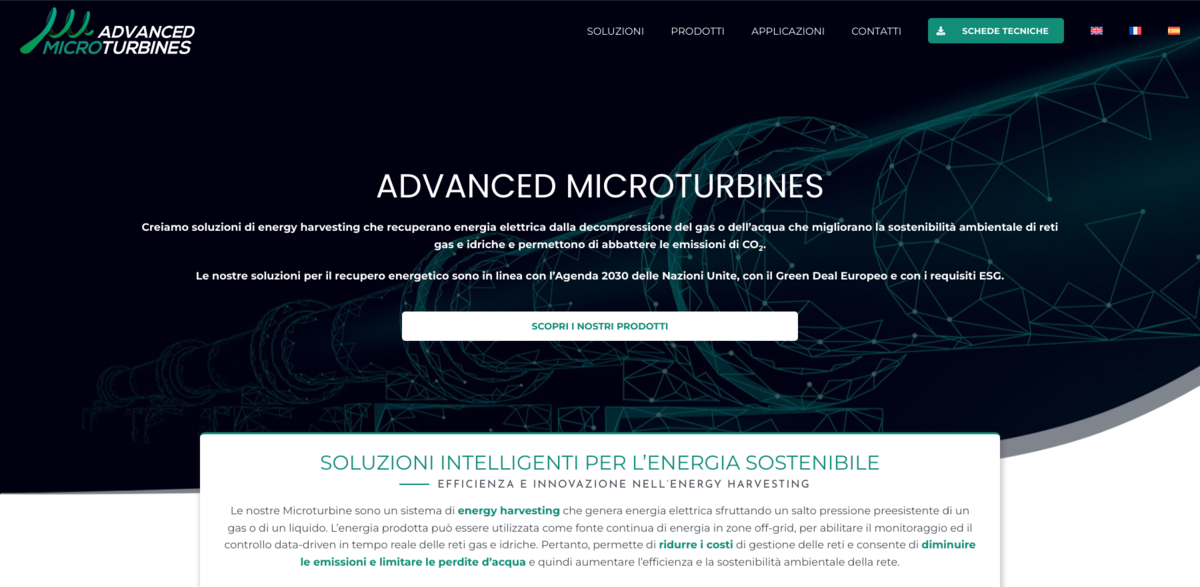What Are Advanced Microturbines?
Advanced Microturbines are innovative energy harvesting solutions designed to recover electrical energy from the decompression of gas or water. These systems tap into the existing pressure drops within gas and water networks, turning what would otherwise be wasted energy into a valuable power source. The technology not only boosts environmental sustainability but also plays a key role in reducing CO2 emissions. Developed with a focus on off-grid energy generation, these microturbines enable continuous electricity supply, especially in remote areas where traditional power sources might be scarce or unreliable.
Main Benefits of Advanced Microturbines
These microturbines bring a host of advantages that make them stand out in the energy harvesting field. Here are some key figures and facts:
- Power generation capacity ranges from 30 W to 200 W for microturbines, and up to 50 kW for larger turboexpanders.
- Suitable for both natural gas, technical gases, and water applications.
- Enable real-time monitoring and control of gas and water networks, supporting predictive maintenance.
- Reduce management and operational costs by improving network efficiency.
- Help limit water losses and mechanical stress on pipelines.
- Produced in Italy using sustainable materials, ensuring a low carbon footprint.
- Support ESG objectives and align with the United Nations 2030 Agenda and the European Green Deal.
Microturbines for Gas Networks
Microturbines designed for gas applications are a game-changer when it comes to managing gas networks. By harnessing the energy from gas decompression, these devices provide a reliable power source for IoT sensors and control systems. This capability allows for real-time monitoring, which is crucial for predictive maintenance. The result? Lower maintenance costs, reduced CO2 emissions, and a safer, more efficient gas distribution network. Plus, the electricity generated can be fed back into the grid or used locally, adding flexibility to energy management.
Microturbines for Water Networks
Water microturbines work similarly but focus on the water distribution side of things. They capture energy from pressure drops in water pipelines, powering smart monitoring systems that keep an eye on pressure levels and detect leaks early. This leads to a significant reduction in water losses and mechanical stress on pipes, which means fewer breaks and less wasted water. It’s a win-win for both network operators and the environment, helping to conserve a precious resource while cutting down on operational expenses.
Turboexpanders for Large-Scale Energy Recovery
For larger energy needs, the turboexpander offers a powerful solution. With a capacity ranging from 3 kW to 50 kW, it’s perfect for gas decompression stations along pipelines. This device recovers energy from gas expansion and converts it into electricity that can be used on-site or fed into national grids and microgrids. Beyond just electricity, the power generated can support heat pumps or even green hydrogen production, making it a versatile tool in the transition to sustainable energy systems.
Project Impact on Sustainable Development Goals (SDGs)
- SDG 7: Affordable and Clean Energy – by providing off-grid, renewable energy solutions.
- SDG 9: Industry, Innovation, and Infrastructure – through advanced energy harvesting technologies.
- SDG 11: Sustainable Cities and Communities – by improving infrastructure efficiency and reducing emissions.
- SDG 12: Responsible Consumption and Production – via optimized resource use and waste reduction.
- SDG 13: Climate Action – by cutting CO2 emissions and supporting green energy initiatives.
- SDG 15: Life on Land – through reduced environmental impact and sustainable material use.
Why Advanced Microturbines Matter
In a world where energy efficiency and sustainability are more important than ever, Advanced Microturbines offer a smart, practical solution. They not only help reduce emissions and operational costs but also enable the digital transformation of gas and water networks through IoT integration. By turning pressure drops into a continuous power source, these microturbines support smarter, greener infrastructure that’s built to last. And with their low carbon footprint and alignment with global sustainability goals, they’re a shining example of how technology can drive positive change—one pipeline at a time.





















